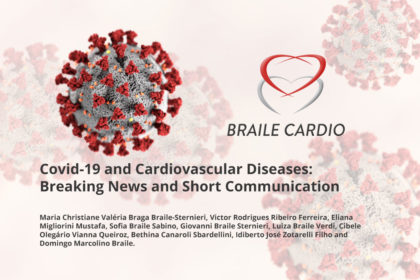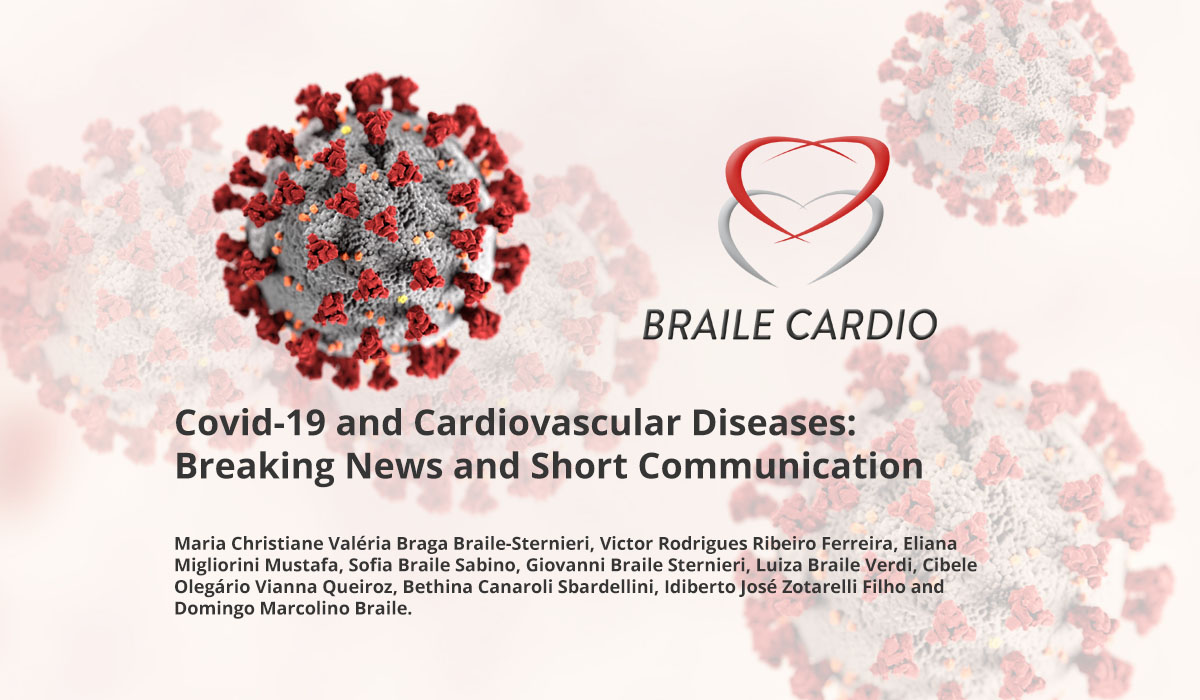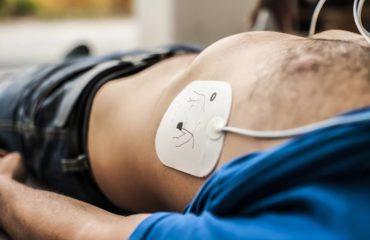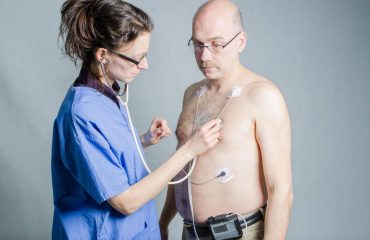
A Coronavirus Disease (COVID-19) epidemic began in December 2019 in China, leading to a Public Health Emergency of International Interest.

Maria Christiane Valéria Braga Braile-Sternieri (1), Victor Rodrigues Ribeiro Ferreira (1)(2), Eliana Migliorini Mustafa (1), Sofia Braile Sabino (1), Giovanni Braile Sternieri (1), Luiza Braile Verdi (1), Cibele Olegário Vianna Queiroz (1), Bethina Canaroli Sbardellini (1), Idiberto José Zotarelli Filho* (1)(2) and Domingo Marcolino Braile (1).
(1) Domingo Braile Institute of Sao Jose do Rio Preto (SP), Rua Luiz Vaz de Camoes, 3111 – Vila Redentora, São José do Rio Preto-SP, 15015-750, Brazil.
(2) Faceres – Medical School of Sao Jose do Rio Preto, Av. Anisio Haddad, 6751 – Jardim Francisco Fernandes, São José do Rio Preto – SP, 15090-305, Brazil.
* Corresponding Author: Idiberto José Zotarelli Filho, MSc, Ph.D; e-mail address: scientific@institutodomingobraile. com.br or m.zotarelli@gmail. com.
Clinical, laboratory and imaging characteristics have been partially characterized in some observational studies. Thus, it is necessary to assess the cardiovascular damage of patients with COVID-19 and to determine the correlation of the pro-terminal type B serum natriuretic peptide (NT- proBNP) and cardiac troponin I (cTnI) with the COVID-19 severity. Thus, a cross- sectional study was carried out on 150 consecutive patients with COVID-19 at the fever clinic at Tongji Hospital in Wuhan, from January to February 2020, including 126 mild cases and 24 cases in intensive care. Univariate and multivariate logistic regression was used to analyze the correlation of past medical history, including hypertension, diabetes and Coronary Heart Disease (CHD), as well as serum levels of NT-proBNP and cTnI in disease severity in patients with COVID-19. Age, hypersensitive C-reactive protein (hs- CRP) and patients’ serum creatinine levels were higher in intensive care than in mild cases (p<0.05). The prevalence of elevated male NT-proBNP and cTnI, hypertension and coronary heart disease was significantly higher in critical care patients than in mild cases (p<0.05). The univariate logistic regression analysis showed that age, male gender, elevated NT-proBNP, elevated cTnI, elevated CRP, elevated serum creatinine, hypertension and CHD were significantly correlated with critical disease status (all p <0.05). Multivariate logistic regression analysis showed that high cTnI (OR = 26.909, 95% CI 4,086-177,226, P = 0.001) and CHD (OR = 16,609, 95% CI 2,288-120,577, P = 0.05) were the independent risk factors critical illness status. Thus, COVID-19 can significantly affect cardiac function and lead to myocardial injury. The past medical history of CHD and the increase in the level of cTnI are two independent determinants of the clinical status of the disease in patients with COVID-19 [1].
In addition, another study explored the clinical characteristics and prognosis of new patients with COVID-19 combined with cardiovascular disease (CVD). A retrospective analysis was performed on 112 COVID-19 patients with CVD admitted to the western district of Union Hospital in Wuhan, from January 20, 2020, to February 15, 2020. They were divided into a critical group (n = 16) and general group (n=96) according to the severity of the disease and the patients were followed up until the clinical outcome. Observation indicators included blood count, C-reactive protein (CRP), arterial blood gas analysis, myocardial injury markers, coagulation function, liver and kidney function, electrolyte, procalcitonin (PCT), type B natriuretic peptide (BNP), blood lipids, pulmonary CT and pathogen detection. Compared with the general group, the lymphocyte count was extremely lower in the critical group, CRP (106.98 (81.57, 135.76) mg / L vs. 34.34 (9.55.76.54) mg / L, p <0.001) and PCT (0.20 (0.15.0.48) µg / L vs. 0.11 (0.06.0.20) µg / L, p <0.001) were significantly higher in critical group. The BMI of the critical group was significantly higher than that of the general group (25.5 (23.0, 27.5) kg/m2 vs. 22.0 (20.0, 24.0) kg/m2, p = 0.003). Patients were divided into a non-surviving group (17, 15.18%) and a surviving group (95, 84.82%). Among non-survivors, there were 88.24% (15/17) patients with BMI> 25 kg/m2, which was significantly higher than that of survivors (18.95% (18/95), p<0.001). Compared with surviving patients, the oxygenation index (130 (102, 415) vs. 434 (410, 444), p<0.001) was significantly lower and lactic acid (1.70 (1.30, 3.00) mmol/L vs. 1.20 (1.10, 1.60) mmol/L, p<0.001) was significantly higher in non-survivors. Therefore, COVID-19 patients combined with CVD are associated with an increased risk of mortality. Critical patients are characterized by fewer lymphocytes. Higher BMI is more often seen in critically ill, non-survivors. The use of angiotensin converting enzyme inhibitor and angiotensin receptor blockers (ACEI and ARB) does not affect the morbidity and mortality of COVID-19 combined with CVD. Aggravating causes of death include fulminant inflammation, accumulation of lactic acid and thrombotic events [2].
Another study included patients with acute myocardial infarction with ST- segment elevation (STEMI) admitted by the Accident and Emergency Department and in whom the percutaneous coronary interventions (PCI) was performed in Wuhan-China. The focus spanned the period since January 25, 2020, when city hospitals began instituting emergency infection protocols to contain COVID-19. This required hospitals to suspend all non-essential visits and adjust internal and external clinical services. PCI nominations were in accordance with international guidelines. The criteria included hospitalized STEMI (n=1), STEMI with unknown onset of symptoms (n=3) and patients with cardiac arrest (n=2). The time between the onset of the symptom and the first medical contact is defined as the time from the beginning of the chest discomfort reported by the patient until the moment of the first medical contact. The door-to-device time is defined as the time of arrival from the Accident and Emergency Department until the cable runs successfully during PCI. The time of arrival at the catheterization device is defined as the time between the patient’s arrival at the catheterization laboratory and the time that the wire passes successfully. From January 25, 2020, to February 10, 2020, we observed changes in the temporal components of treatment with STEMI among the aggregate group of 7 consecutive patients undergoing PCI. They were compared with data from 108 patients with STEMI treated with PCI in the previous year, from February 1, 2018, to January 31, 2019 (n = 108). These 7 patients did not suffer from COVID-19 infection and 6 out of 7 went to our hospital during regular work hours [3].
In addition, cardiovascular metabolic comorbidities made patients more susceptible to COVID-19 and exacerbated the infection. Thus, a study analyzed the association of cardiovascular metabolic diseases with the development of COVID-19. A meta-analysis of eligible studies was performed that summarized the prevalence of cardiovascular metabolic diseases in COVID-19 and compared the incidences of comorbidities in Intensive Care Units (ICU) / critically ill and non-ICU / critically ill patients. A total of six studies with 1527 patients were included in this analysis. The proportions of hypertension, cardio-cerebrovascular disease, and diabetes in patients with COVID-19 were 17.1%, 16.4%, and 9.7%, respectively. The incidences of hypertension, cardio-cerebrovascular diseases and diabetes were two to three times and twice, respectively, higher in ICU / severe cases than in non-ICU / severe patients. At least 8.0% of patients with COVID-19 suffered the acute cardiac injury. The incidence of acute cardiac injury was about 13 times higher in the ICU / critically ill patients compared to non-ICU / critically ill patients. Patients with previous cardiovascular metabolic diseases may face an increased risk of progressing to a serious condition and comorbidities can also greatly affect the prognosis of COVID-19. Therefore, COVID-19 can aggravate damage to the heart [4].
Also, a systematic literature review was carried out with meta-analysis, using three databases to evaluate clinical, laboratory, imaging and results of cases confirmed with COVID-19. Observational studies and also case reports were included and analyzed separately. We performed a meta-analysis of the random-effects model to calculate the combined prevalence and 95% confidence interval (95% CI). 660 articles were recovered for the period (1/1/2020 to 2/23/2020). After screening, 27 articles were selected for evaluation in full text, 19 were finally included for qualitative and quantitative analyzes. In addition, 39 case report articles were included and analyzed separately. For 656 patients, fever (88.7%, 95% CI 84.5-92.9%), cough (57.6%, 40.8-74.4%) and dyspnea
(45.6%, 10.9 -80.4%) were the most prevalent manifestations. Among the patients, 20.3% (95% CI 10.0-30.6%) required an ICU, 32.8% had acute respiratory distress syndrome (ARDS) (95% CI 13.7- 51.8), 6.2% (95% CI 3.1 -9.3) with shock. Approximately 13.9% (95% CI 6.2-21.5%) of hospitalized patients had fatal results. COVID-19 places an enormous burden on health services, especially in patients with comorbidities. The ICU was necessary for approximately 20% of polymorphic patients infected with COVID-19 and hospitalization was associated with a fatal results above 13% [5].
Therefore, patients with COVID-19 combined with cardiovascular disease are associated with an increased risk of mortality. Critical patients are characterized by fewer lymphocytes. Higher BMI is more often seen in critically ill, non-survivors. The use of ACEI / ARB does not affect the morbidity and mortality of COVID-19 combined with CVD. Aggravating causes of death include fulminant inflammation, accumulation of lactic acid and thrombotic events. Therefore, cardiovascular metabolic comorbidities made patients more susceptible to COVID-19 and exacerbated the infection.
Funding
We would like to thank financial support of Domingo Braile Institute of São José do Rio Preto/SP.
Declaration of Potential Conflict of Interest
The authors declare no conflict of interest.
References
1. Chen C, Chen C, Yan JT, Zhou N, Zhao JP, Wang DW. Analysis of myocardial injury in patients with COVID-19 and association between concomitant cardiovascular diseases and severity of COVID-19. Zhonghua Xin Xue Guan Bing Za Zhi. 2020 Mar 6;48(0):E008. doi: 10.3760/cma.j.cn112148- 20200225-00123.
2. Peng YD, Meng K, Guan HQ, Leng L, Zhu RR, Wang BY, He MA, Cheng LX, Huang K, Zeng QT. Clinical characteristics and outcomes of 112 cardiovascular disease patients infected by 2019-nCoV. Zhonghua Xin Xue Guan Bing Za Zhi. 2020 Mar 2;48(0):E004. doi: 10.3760/cma.j.cn112148- 20200220-00105.
3. Tam CF, Cheung KS, Lam S, Wong A, Yung A, Sze M, Lam YM, Chan C, Tsang TC, Tsui M, Tse HF, Siu CW. Impact of Coronavirus Disease 2019 (COVID-19) Outbreak on ST-Segment-Elevation Myocardial Infarction Care in Hong Kong, China. Circ Cardiovasc Qual Outcomes. 2020 Mar 17:CIRCOUTCOMES120006631. doi: 10.1161/CIRCOUTCOMES.120.006631.
4. Li B, Yang J, Zhao F, Zhi L, Wang X, Liu L, Bi Z, Zhao Y. Prevalence and impact of cardiovascular metabolic diseases on COVID-19 in China. Clin Res Cardiol. 2020 Mar 11. doi: 10.1007/s00392-020-01626-9.
5. Rodriguez-Morales AJ, Cardona-Ospina JA, Gutiérrez-Ocampo E, Villamizar- Peña R, Holguin-Rivera Y, Escalera-Antezana JP, Alvarado-Arnez LE, Bonilla- Aldana DK, Franco-Paredes C, Henao-Martinez AF, Paniz-Mondolfi A, Lagos- Grisales GJ, Ramírez-Vallejo E, Suárez JA, Zambrano LI, Villamil-Gómez WE, Balbin-Ramon GJ, Rabaan AA, Harapan H, Dhama K, Nishiura H, Kataoka H, Ahmad T, Sah R; Latin American Network of Coronavirus Disease 2019- COVID-19 Research (LANCOVID-19). Clinical, laboratory and imaging features of COVID-19: A systematic review and meta-analysis. Travel Med Infect Dis. 2020 Mar 13:101623. doi: 10.1016/j.tmaid.2020.101623.
Covid-19 and Cardiovascular Diseases: Breaking News and Short Communication


![a5Gtv5O[1]](https://brailecardio.com.br/wp-content/uploads/2018/12/a5Gtv5O1-370x240_c.jpg)
